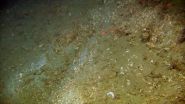Coarctation, or narrowing, of the aorta, restricts blood flow to the lower extremities and causes hypertension and possibly heart failure. Coarctation accounts for 5% of all cases of congenital heart disease and has a high associated morbidity and mortality if left untreated. Treatment options for aortic coarctation include surgical approaches, transcatheter balloon angioplasty, or stent placement. Intermediate and long-term follow-up after aortic stent implantation is poorly documented, with little prospective data available on the incidence of recurrent obstruction, aortic wall complications, or blood pressure recording.
In this study, the authors report on the procedural success of stent implantation for aortic coarctation, including recurrent obstruction/repeat interventions and aortic wall complications, with a particular focus on intermediate and long-term outcomes. "This study is the largest series reported to date on stent implantation for aortic coarctation," says the lead author Ralf Holzer, MD, MSc, FSCAI. "It is the only prospective series that includes intermediate as well as long-term follow-up with integrated imaging provided by catheterization, CT, or MRI."
The study evaluated 302 patients from 34 centers from the CCISC, a prospective interventional registry that captures all types of treatment for coarctation. Patients underwent stent placement for aortic coarctation over a 9-year period between December 2000 and November 2009. Collected data included procedural, demographic, morphological, imaging and clinical data.
Clinical data was collected at baseline, before discharge, and at follow-up and included upper and lower extremity systolic/diastolic blood pressure, as well as the need for antihypertensive medication. Valid follow-up data included integrated imaging data provided by CT and/or MRI and/ or cardiac catheterization. All baseline and follow-up imaging data was evaluated for the presence of aortic wall injury (dissection and aneurysm), stent-related pathology (intimal proliferation and stent fracture), and recurrent/residual obstruction.
Forty-four percent of patients completed intermediate follow-up (3 months) with integrated imaging, and 21% completed long-term follow-up (>18 months). Acute procedural success was 96%. Acute, intermediate, and long-term procedural success was unrelated to patient weight, presence of transverse arch hypoplasia, use of compliance testing, stent type, and balloon type. Unplanned repeat interventions were required in 4% of patients, and aortic wall complications were seen in 1% of patients. Other adverse events occurred mainly acutely and included technical complications such as stent malposition. At long-term follow-up, 23% of patients continued to have systolic blood pressure above the 95th percentile, 9% had an upper-to-lower limb blood pressure gradient in excess of 20 mm Hg, and 32% were taking antihypertensive medication.
Dr. Holzer concludes, "With a long-term procedural success of 77%, an incidence of aortic wall complications of 1.3%, and a need for unplanned reintervention of 4%, the results of stent implantation compare well with other surgical and interventional series. However, even with successful initial stent therapy, patients continue to require long-term follow-up."
INFORMATION: This study is published in Catheterization and Cardiovascular Intervention. Media wishing to receive a PDF of this article may contact healthnews@wiley.com.
Full citation:
"Stenting of Aortic Coarctation: Acute, Intermediate, and Long-Term Results of a Prospective Multi-Institutional Registry—Congenital Cardiovascular Interventional Study Consortium (CCISC)." Ralf Holzer, Shakeel Qureshi, Abdolrahim Ghasemi, Julie Vincent, Horst Sievert, Daniel Gruenstein, Howard Weber, Luis Alday, Alejandro Peirone, Thomas Zellers, John Cheatham, Michael Slack, and Jonathan Rome. Catheterization and Cardiovascular Interventions; Published Online: April 15, 2010 (DOI: 10.1002/ccd.22587). http://onlinelibrary.wiley.com/doi/10.1002/ccd.22587/abstract
Catheterization and Cardiovascular Interventions is the official journal of The Society for Cardiovascular Angiography and Interventions. This international journal covers the broad field of cardiovascular diseases. Subject material includes basic and clinical information that is derived from or related to invasive and interventional coronary or peripheral vascular techniques. The journal focuses on material that will be of immediate practical value to physicians providing patient care in the clinical laboratory setting. To accomplish this, the journal publishes Preliminary Reports and Work In Progress articles that complement the traditional Original Studies, Case Reports, and Comprehensive Reviews. Perspective and insight concerning controversial subjects and evolving technologies are provided regularly through Editorial Commentaries furnished by members of the Editorial Board and other experts. Articles are subject to double-blind peer review and complete editorial evaluation prior to any decision regarding acceptability. For more information, please visit http://onlinelibrary.wiley.com/journal/10.1002/(ISSN)1522-726X.
The Society for Cardiovascular Angiography and Interventions (SCAI) is the primary professional association for invasive and interventional cardiologists, representing over 4,300 physicians in 60 countries. The Society's mission is to promote excellence in invasive and interventional cardiovascular medicine through physician education and representation, its monthly journal Catheterization and Cardiovascular Interventions, and the advancement of quality standards to enhance patient care. For more information, please visit http://www.scai.org or SCAI's comprehensive patient education website, www.seconds-count.org.
Wiley-Blackwell is the international scientific, technical, medical, and scholarly publishing business of John Wiley & Sons, Inc., with strengths in every major academic and professional field and partnerships with many of the world's leading societies. Wiley-Blackwell publishes nearly 1,500 peer-reviewed journals and 1,500+ new books annually in print and online, as well as databases, major reference works and laboratory protocols. For more information, please visit www.wileyblackwell.com or our new online platform, Wiley Online Library (wileyonlinelibrary.com), one of the world's most extensive multidisciplinary collections of online resources, covering life, health, social and physical sciences, and humanities.



